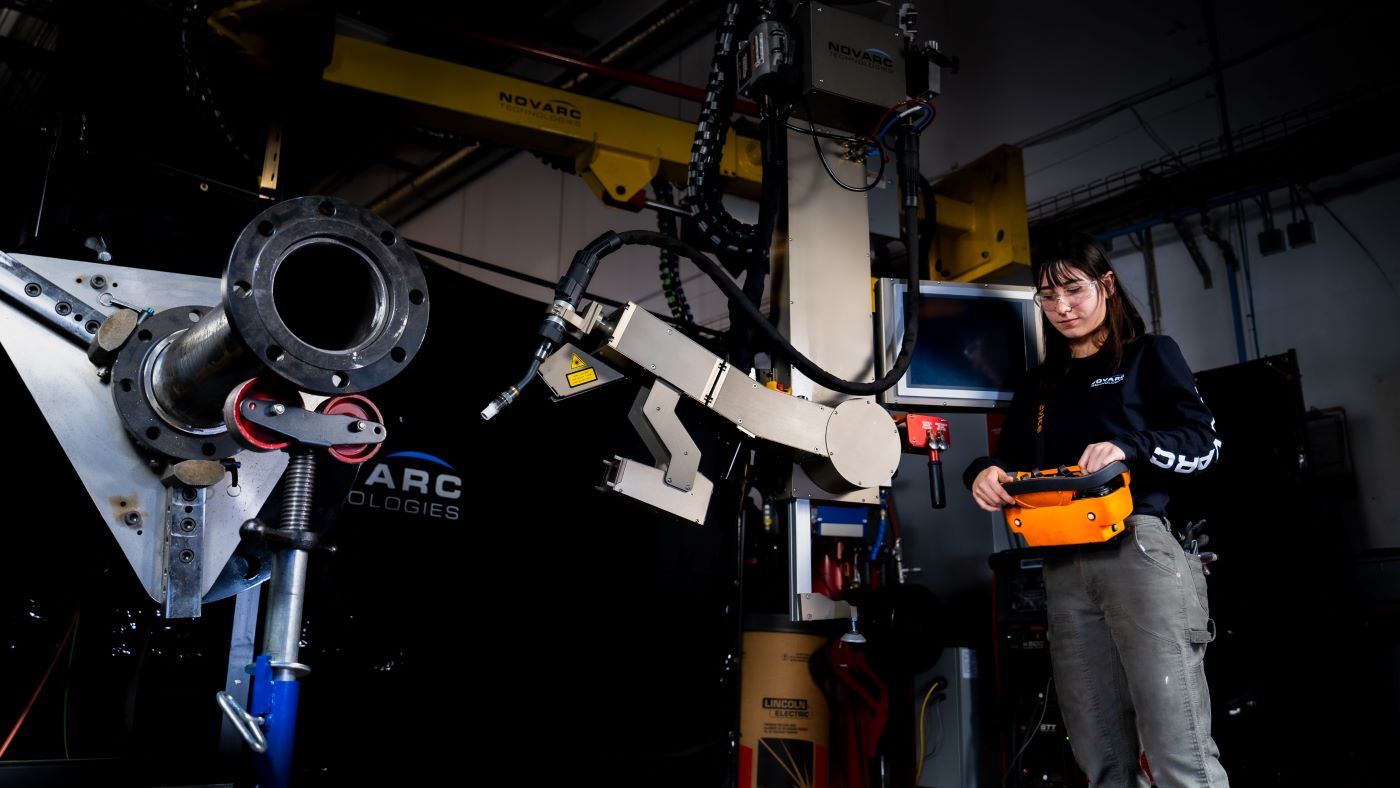The following is an excerpt from Easy Engineering
Interview with Soroush Karimzadeh, Co-Founder & CEO, Novarc Technologies Inc.
Easy Engineering: What are the main areas of activity of the company?
Soroush Karimzadeh: Novarc enables companies such as mechanical contractors, shipbuilding companies, EPCs, and oil and energy firms to win more projects and get ahead in an increasingly competitive market by increasing their welding productivity, lowering their repair rates, and helping them to combat the shortage of qualified welders.
E.E: What’s the news about new products?
S.K: Novarc is leveraging advanced AI to deliver solutions to increasing the intelligence of the welding cobot to address current welding challenges.
Novarc’s SWR (Spool Welding Robot)+HyperFill ® is providing a highly efficient, fully integrated dual torch system that maximizes productivity and profitability for the company’s customers. HyperFill uses Lincoln Electric’s patent-pending twin-wire GMAW solution. With the HyperFill option, fabrication shops can expand the capabilities of the SWR. The system increases heavy productivity by increasing weld deposition rates while delivering excellent weld quality.
E.E: What are the ranges of products?
S.K: Novarc’s Spool Welding Robot (SWR™), the world’s first welding cobot, was launched in 2016. Novarc has installed more than 80 of its robots throughout North America, the United Kingdom, Germany, Saudi Arabia, Australia and China. Novarc’s clients typically recover their capital investment within six to 18 months.
Novarc continues to develop intellectual property for products/technologies in welding automation.
E.E: At what stage is the market where you are currently active?
S.K: The market for welding cobots is at a stage of active demand.
The fabrication and manufacturing welding industry is in fact facing an ominous challenge. The National Association of Manufacturers reports that 81 per cent of manufacturers are unable to hire the number of welders they need to satisfy demand. And the American Welding Society predicts a shortage of 314,000 welders in the United States by next year. With the average age of a welder in the United States now 55 years, this shortage is expected to increase significantly over the next five to 10 years.
E.E: What can you tell us about market trends?
S.K: The industry is rapidly implementing welding automation systems. The number of installed industrial welding robots now stands at 400,000 units and is growing rapidly, with an additional 45,000 units being shipped annually. Automotive and transportation markets account for six out of every 10 units, with large robotic companies such as ABB, Yaskawa, Fanuc and Kuka supplying 50 per cent of those units. (Asia represents 70 per cent of the total arc welding market.)
E.E: What are the most innovative products marketed?
S.K: Welding robots only provide the hardware; they lack the welding logic and cognition for practically meeting the requirements in welding applications. The most innovative products, therefore, provide an autonomous and adaptive welding solution that uses artificial intelligence (AI) and computer vision: Welding 4.0. This wave of robotic welding can address the shortage of highly skilled welders and dramatically improve the quality of end products.
E.E: What estimations do you have for 2023?
S.K: While industrial welding robots and cobots are growing quickly, there is an urgent need for more autonomy and intelligence. In 2023, the focus will be expanding on the welding robot which provides the hardware, but lacks the welding logic and cognition for practically meeting the requirements in welding applications. Novarc is leveraging advanced AI to deliver solutions to increasing the intelligence of the welding cobot to address current welding challenges.
